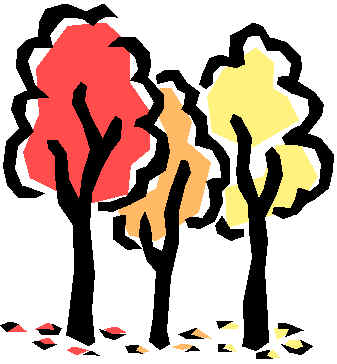Biodiversity and Conservation

What is Biodiversity? Biodiversity is a modern term which simply means " the variety of life on earth". This variety can be measured on several different levels.Genetic - variation between individuals of the same species. This includes genetic variation between individuals in a single population , as well as variations between different populations of the same species. Genetic differences can now be measured using increasingly sophisticated techniques. These differences are the raw material of evolution. Species - species diversity is the variety of species in a given region or area. This can either be determined by counting the number of different species present, or by determining taxonomic diversity. Taxonomic diversity is more precise and considers the relationship of species to each other. It can be measured by counting the number of different taxa (the main categories of classification) present. For example, a pond containing three species of snails and two fish, is more diverse than a pond containing five species of snails, even though they both contain the same number of species. High species biodiversity is not always necessarily a good thing. For example, a habitat may have high species biodiversity because many common and widespread species are invading it at the expense of species restricted to that habitat. Ecosystem - Communities of plants and animals, together with the physical characteristics of their environment (e.g. geology, soil and climate) interlink together as an ecological system, or 'ecosystem'. Ecosystem diversity is more difficult to measure because there are rarely clear boundaries between different ecosystems and they intergrade into one another. However, if consistent criteria are chosen to define the limits of an ecosystem, then their number and distribution can also be measured. |
How many species are there? |
 Estimates of global species diversity vary enormously because it is
so difficult to guess how many species there are in virtually unexplored habitats such as
the deep sea and untouched rain forest areas. (Nineteen trees sampled in Panama were found
to contain 1,200 different beetle species alone!) Global species estimates range from 2
million to 100 million species. Ten million is probably nearer the mark. Only 1.4 million
species have been named. Of these, approximately 250,000 are plants and 750,000 are
insects. New species are continually being discovered every year. The number of species
present in little-known ecosystems such as soil and the deep sea can only be guessed at.
It has been estimated that the deep sea floor may contain as many as a million undescribed
new species. To put it simply, we really have absolutely no idea how many species there
are! Estimates of global species diversity vary enormously because it is
so difficult to guess how many species there are in virtually unexplored habitats such as
the deep sea and untouched rain forest areas. (Nineteen trees sampled in Panama were found
to contain 1,200 different beetle species alone!) Global species estimates range from 2
million to 100 million species. Ten million is probably nearer the mark. Only 1.4 million
species have been named. Of these, approximately 250,000 are plants and 750,000 are
insects. New species are continually being discovered every year. The number of species
present in little-known ecosystems such as soil and the deep sea can only be guessed at.
It has been estimated that the deep sea floor may contain as many as a million undescribed
new species. To put it simply, we really have absolutely no idea how many species there
are! |
| Extinction is a fact of life. Species have been evolving and dying
out ever since the origin of life. One only has to look at the fossil record to appreciate
this. However, species are now becoming extinct at a greater rate than at any previous
time in geological history, almost entirely as a direct result of human activities. In
former geological times, species which became extinct would have been replaced by new ones
evolving to fit the gaps left behind. In current times, this is in many cases impossible
because whole habitats have been lost. Predictors of future species losses calculate that a quarter of all species on earth are likely to be extinct, or on the way to extinction within 30 years. It has been predicted that within 100 years, three quarters of all species will either be extinct, or in populations so small that they can be described as "the living dead". In practice, these figures are probably immaterial, as the ecosystems and processes sustaining life would more than likely have collapsed long before such drastic losses were sustained. However, it must be emphasized that these are only predictions, often based on computer models and as such, also need to be taken with a pinch of salt. Some species are more vulnerable to extinction than others. These include:
Loss of an individual species can have various different effects on the remaining species in an ecosystem. These effects depend upon the how important the species is in the ecosystem. Some species can be removed without apparent effect, while removal of others may have enormous effects on the remaining species. Species such as these are termed "keystone" species. |
| Ecological Reasons Individual species and ecosystems have evolved over millions of years into a complex interdependence. This can be viewed as being akin to a vast jigsaw puzzle of inter-locking pieces. If you remove enough of the pieces, the whole framework collapses. The more habitats and species that are lost, the greater the danger of this total collapse becomes. The loss of species in tropical ecosystems such as the rain forests, is extremely well-publicised and worrying. However, equally worrying is the loss of habitat and species closer to home in Britain. This is arguably on a comparable scale, given the much smaller area involved. Escalating, unsustainable use of biological resources worldwide, is leading to the total degeneration of the planet’s life-support systems.Nearly 80% of the world’s large areas of ancient forest have been removed, much of it in the last three decades. Forests play a critical role in regulating climate. The destruction of forest, particularly by burning, results in great increases in the amount of carbon in the atmosphere. This happens for two reasons. Firstly, there is a great reduction in the amount of carbon dioxide taken in by plants for photosynthesis, and secondly, burning releases huge quantities of carbon dioxide into the atmosphere. (The 1997 fires in Indonesia’s rain forests are said to have added as much carbon to the atmosphere as all the coal, oil and gasoline burned that year in western Europe.) |
 |
Forest destruction at present rates increases world carbon emission by nearly 20%. This is significant because carbon dioxide is one of the main greenhouse gases implicated in the current global warming trend. (Climate Change Information) |
| Average global temperatures have been showing a steadily increasing trend. Snow
and ice cover have decreased, deep ocean temperatures have increased and global sea levels
have risen by 100 - 200 mm over the last century. If current trends continue, scientists
predict that the earth could be on average 1oC warmer by 2025 and 3oC
warmer by 2100. These changes, while small, could have drastic effects. As an example,
average temperatures in the last Ice Age were only 5oC colder than current
temperatures. Rising sea levels which could drown many of our major cities, extreme
weather conditions, causing drought, flooding and hurricanes, and changes in the
distribution of disease-bearing organisms are all predicted effects. Forests also affect rainfall patterns through transpiration losses and protect the watershed of vast areas. Deforestation therefore results in decreases in rainfall and changes in the pattern of its distribution. It often also results in erosion and loss of soil and often to flooding. Devastating flooding in many regions of China over the past few years has been largely attributed to deforestation. These are only some of the ecological effects of deforestation. The effects described translate directly into economic effects on human populations. Economic Reasons Environmental disasters such as floods, forest fires and hurricanes, which may be indirectly or directly caused by human activities, all have dire economic consequences for the regions afflicted. Clean-up bills can run into the billions, not to mention the toll of human misery involved. Susceptible regions are often also in the less-developed and poorer nations to begin with. Erosion and desertification, also as a result of deforestation, reduce the ability of people to grow crops and to feed themselves. This leads to economic dependence on other nations. Non-sustainable extraction of resources from forests (e.g. hardwood timber) will also eventually lead to the collapse of the industry involved. If sustainable methods are used, even when harvested areas are replanted, the resulting areas are in no way a substitute for the forests which have been removed. These may have taken thousands of years to develop into intricate systems containing myriad's of closely interdependent species. Where trees are planted purely for harvesting, the ground layer and understory layers of the original forest are discouraged by management. The new young trees will support only a fraction of the original species which may have been there before. Rain forest hardwoods take many years to grow to a commercially useful size and cannot be quickly replaced. Nor can the extremely complex communities which they once supported. General loss of biodiversity also means that species which potentially have great economic and social importance may be lost before they are even discovered. The vast, largely untapped resource of medicines and useful chemicals contained in wild species may disappear forever. The wealth of species contained in tropical rain forests may harbour untold numbers of chemically or medically useful species. Many marine species defend themselves chemically and this also represents a rich potential source of new economically important medicines. Additionally, the wild relatives of our cultivated crop plants provide an invaluable reservoir of genetic material to aid in the production of new varieties of crops. If all these are lost, then our crop plants also become more vulnerable to extinction. Ethical Reasons When forests and other habitats are removed or degraded, so are the local traditions and livelihoods based on those habitats. The lifestyles, and in extreme cases, lives of people, may be severely threatened as a result. The fisheries industry in Britain and other parts of the world is a good example. Unsustainable international fishing practices, along with ill-advised legislation and control have resulted in decimation of fish stocks. As a result, many traditional local fishing industries are going out of business. In other regions such as the tropics, forest-dwelling peoples with age-old traditions which allowed them to subsist off the land, are being displaced by activities such as cattle ranching, logging, hydroelectric power schemes, large scale farms and mining schemes. The question is, is it acceptable to destroy lifestyles and traditions or to cause mass extinction's, in the pursuit of short term economic gain? The fate of the entire planet is now dependent upon a single species. This is unprecedented in the Earth’s history. Aesthetic Reasons
Most people would agree that areas of vegetation, with all their attendant life forms, are inherently more attractive than burnt, scarred landscapes, or acres of concrete and buildings. Human well-being is inextricably linked to the natural world. In the western world, huge numbers of people confined to large urban areas derive great pleasure from visiting the countryside. The ability to do so is regarded not so much as a need, but as a right. National governments must therefore juggle the conflicting requirements for more housing, industry and higher standards of living with demands for countryside for recreational purposes. |
Copyright 2003 Dr Barbara Corker